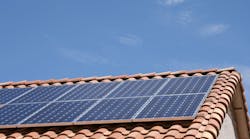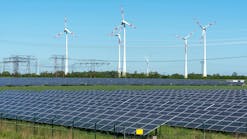During the period 2019-2021, all of Arizona’s largest electric utilities, Arizona Public Service Company, Tucson Electric Power, and Salt River Project, committed publicly to moving away from fossil fuels and generating more of their power from clean energy resources, such as solar, nuclear, and hydrogen.
On Jan. 22, 2020, APS announced plans to shut down all coal generation by 2031 and generate 100% of its electricity from zero-carbon emission resources such as wind and solar by 2050. APS provides power to approximately 1.3 million households and businesses throughout the state and is Arizona’s largest for-profit electric utility,
On June 26, 2020, TEP announced plans to retire the coal fired Springerville Generating Station in 2032. Furthermore, TEP announced it will provide more than 70% of its power from renewable sources by 2035. Ultimately TEP estimates this shift will result in a net decrease of 7% of 2020 water usage and 80% carbon dioxide emissions. TEP provides power to approximately 436,303 households and businesses in the Tucson area and is Arizona’s second-largest for-profit electric utility.
On June 3, 2019, SRP announced that it would be shutting down the coal-fired Hayden plant in 2027, as well as Craig Unit 1 in 2025, Unit 2 in 2028, Four Corners Power Plant in 2031, and Coronado no later than 2032. Furthermore, SRP’s current plan will reduce carbon by 65% from 2005 levels in 2035 and 90% by 2050. SRP provides power to approximately 1.1 million customers in Central Arizona and is Arizona’s most prominent non-profit electric utility.
Until recently, clean energy technologies were too cost-prohibitive and unreliable to add in large amounts to the grid. However, the announcements from Arizona’s largest electric utilities reflect a dramatic change in the philosophical and economic views toward the adoption of clean energy technologies and the potential reliability and affordability benefits they can provide.
Previously, utilities such as APS, TEP, and SRP would not have considered the adoption of new clean energy resources unless the utilities were required to do so pursuant to strict government mandates. But now, Arizona’s utilities have calculated that investing in clean energy resources simply represents a better business decision. As a result, these recent decisions by Arizona’s largest electric utilities have been completely voluntary.
Chairwoman of the Arizona Corporation Commission (the agency that regulates for-profit utilities like APS and TEP), Lea Márquez Peterson, notes that the utilities’ voluntary commitments to move forward toward zero carbon emissions without government mandates allows Arizona families and small businesses to reap the benefits of both worlds: reduced carbon emissions on the one hand, while maintaining grid reliability and affordability on the other. Such benefits include cleaner air and water for Arizona’s future, which attract new jobs and economic opportunities to Arizona, and a safe and reliable electric grid for Arizona’s families and small businesses at just and reasonable rates.
Chairwoman Márquez Peterson has consistently advocated for the pursuit of clean energy as a “goal” and was the first commissioner in Arizona to propose a 100% zero-carbon energy goal for the state. She supports the economic development opportunities that have been afforded to Arizona’s rural communities through clean energy projects over the years and understands that electricity is one of the essential services that keeps Arizona’s economy thriving and helps to attract new businesses and jobs to the state.
She also supports policies that bolster the Commission’s constitutional mandate to deliver safe and reliable power at affordable rates and has continuously stressed the importance of giving Arizona’s utilities the flexibility to adopt new clean energy resources according to Arizona’s timeline, when evidence demonstrates that such resources are safe and reliable for the grid and cost-effective for Arizona’s ratepayers.
In Arizona, consumers understand that access to continuous and affordable power during the state’s hottest and coldest months is a matter of life and death for many residents. While they want to support and move forward with clean energy, they don’t want to jeopardize their families’ health and safety in the process.
“Achieving 100% zero carbon emissions while protecting Arizona’s ratepayers and ensuring that the grid remains safe and reliable is the Arizona way for achieving a cleaner energy economy,” said Chairwoman Márquez Peterson.
“The voluntary commitments of our Arizona utilities represent a monumental shift and a completely independent position for our state, free of any special interests.”
“I look forward to seeing the utilities move forward with their voluntary commitments and to holding the utilities accountable through our long-term planning and competitive bidding process to ensure that the steps we take to get there are safe and reliable for the grid and cost effective for Arizona’s families and small businesses.”


